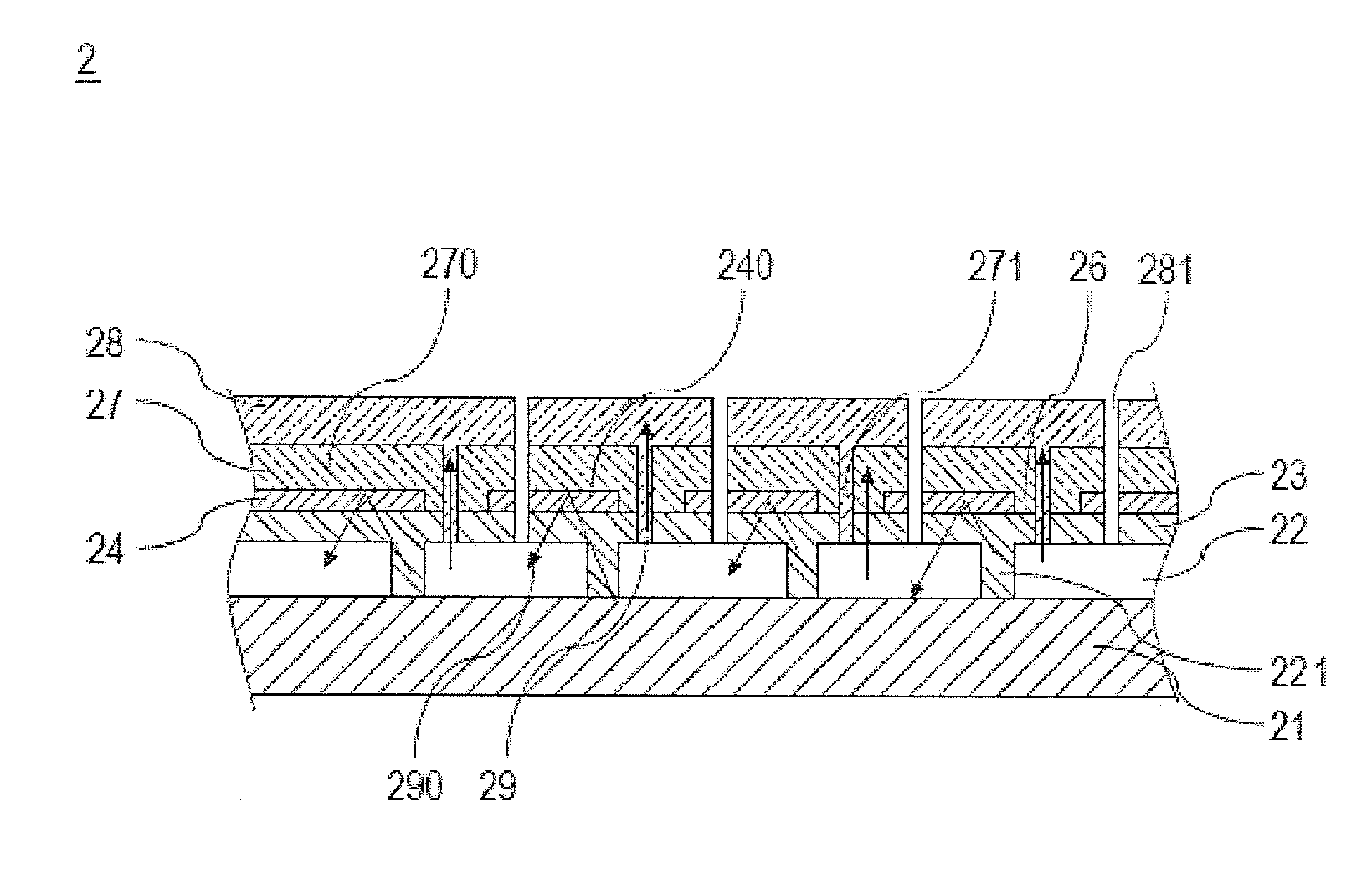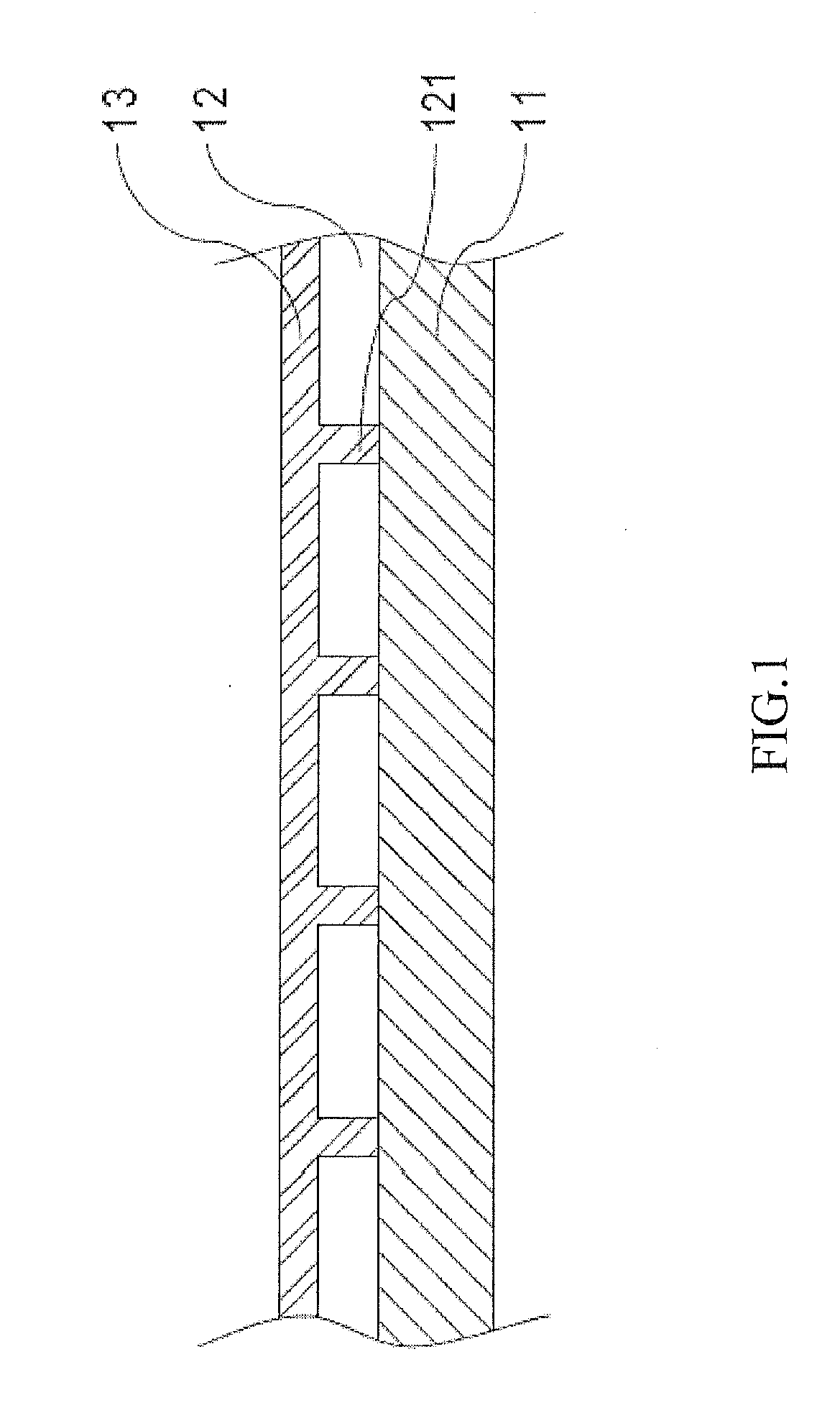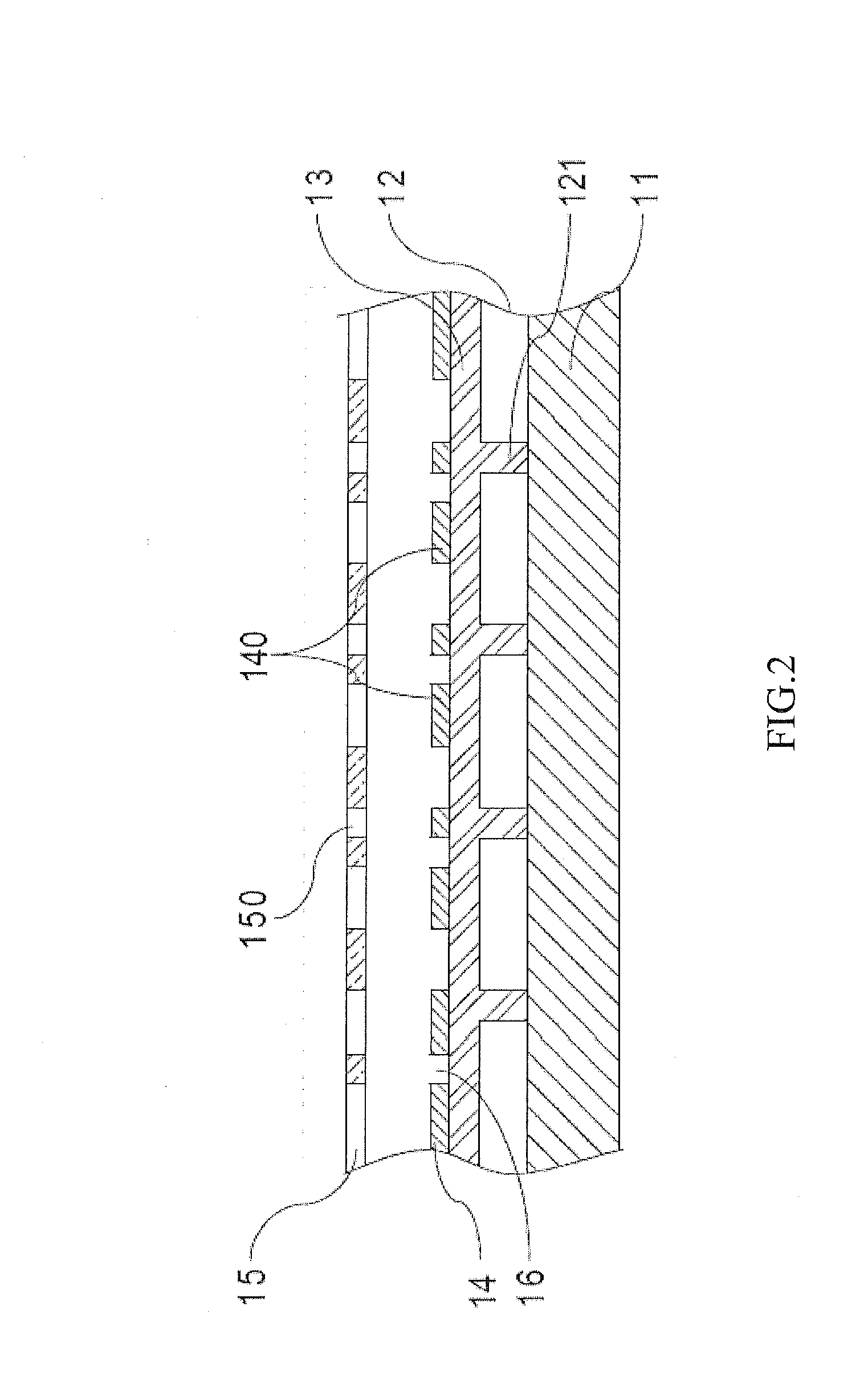Stacked-layered thin film solar cell and manufacturing method thereof
a solar cell and layered technology, applied in the direction of solid-state devices, pv power plants, semiconductor devices, etc., can solve the problems of short-circuit faults, increased effect, increased equipment costs as well as manufacturing cycle, etc., to increase light diffraction, high reflective effect, and increase light transmission efficiency
- Summary
- Abstract
- Description
- Claims
- Application Information
AI Technical Summary
Benefits of technology
Problems solved by technology
Method used
Image
Examples
Embodiment Construction
[0018]The present invention provides a stacked-layered thin film solar cell and a manufacturing method thereof, wherein the principle of photoelectric conversion of solar cells is well known to a person of ordinary skill in the art and therefore will not be detailed herein. Besides, it is to be understood that the drawings referred to in the following description are intended to demonstrate features of the present invention only schematically, so the drawings are not need to be made in scale.
[0019]The present invention herein discloses a first preferred embodiment for a stacked-layered thin film solar cell manufacturing method with the particulars discussed below.
[0020]Referring to FIG. 1, firstly, a substrate 11 that is transparent is provided and formed thereon with a first electrode layer 12 by means of sputtering deposition, atmospheric pressure chemical vapor deposition or low pressure chemical vapor deposition. The material from which the first electrode layer 12 is made can b...
PUM
 Login to View More
Login to View More Abstract
Description
Claims
Application Information
 Login to View More
Login to View More - R&D
- Intellectual Property
- Life Sciences
- Materials
- Tech Scout
- Unparalleled Data Quality
- Higher Quality Content
- 60% Fewer Hallucinations
Browse by: Latest US Patents, China's latest patents, Technical Efficacy Thesaurus, Application Domain, Technology Topic, Popular Technical Reports.
© 2025 PatSnap. All rights reserved.Legal|Privacy policy|Modern Slavery Act Transparency Statement|Sitemap|About US| Contact US: help@patsnap.com



